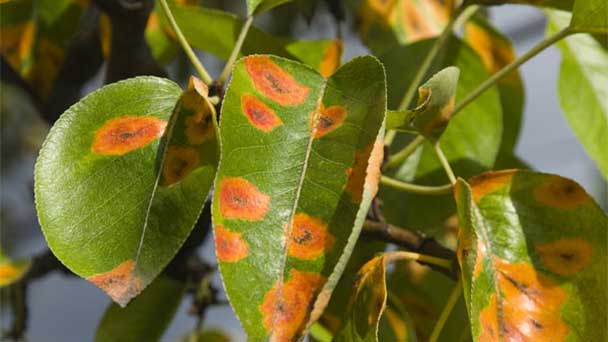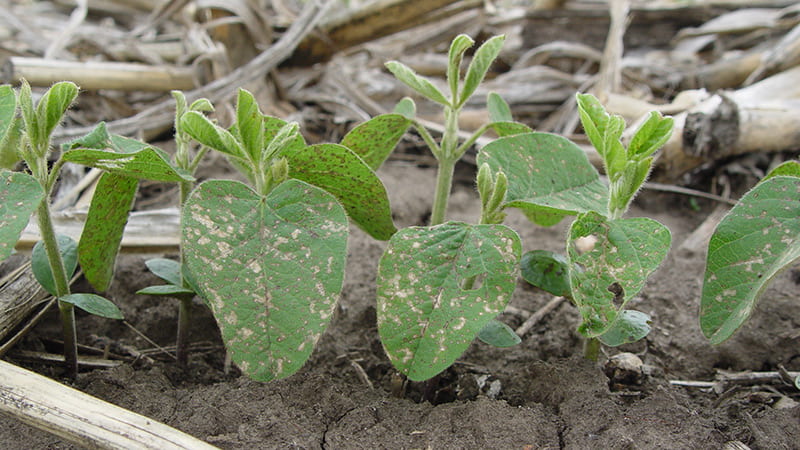Plant diseases caused by microorganisms
Written by Joy
Sep 28 2020

Plant diseases caused by microorganismsIt makes people feel the hard work of the farmer in the field. Most plants still require people's careful attention. Failure to manage pests and diseases caused by microorganisms will result in poor plants appearance, reduced production, and damage to farmers' rights. Due to the high demand, many pesticide chemical companies, such as Monsanto, Bayer and so on have made huge profits to solve plant diseases caused by microorganisms.
 Although chemical pesticides have rapid efficacy, they have serious damage to the environment and ecology, and have a significant impact on the human body. For example, the case of DDT is not far away. The efficacy of ed-amide has an effect on beneficial insects and pests. Chemical pesticides have also been found to be left in food and other cases, which have attracted much criticism. In recent years, because of the rise of the concept of environmental protection and sustainable management, people hope to avoid the use of harmful pesticides and reduce the application of chemical fertilizers in the process of planting crops. Therefore, concepts such as organic agriculture and natural farming have been advocated. So that farmland can maintain fertility and maintain the physical and chemical properties of the soil.
Although chemical pesticides have rapid efficacy, they have serious damage to the environment and ecology, and have a significant impact on the human body. For example, the case of DDT is not far away. The efficacy of ed-amide has an effect on beneficial insects and pests. Chemical pesticides have also been found to be left in food and other cases, which have attracted much criticism. In recent years, because of the rise of the concept of environmental protection and sustainable management, people hope to avoid the use of harmful pesticides and reduce the application of chemical fertilizers in the process of planting crops. Therefore, concepts such as organic agriculture and natural farming have been advocated. So that farmland can maintain fertility and maintain the physical and chemical properties of the soil.
After a plant is infected with a microbial pathogen, the allergic reaction will produce a small dark spot (blue dotted line) on the leaves to limit the spread of the pathogen.

The use of microorganisms
The article Microorganisms and Health Industry: Microorganisms and Organic Agriculture mentioned that the use of microorganisms for biological control can be said to be a new generation of green revolution. It also makes the soil microorganisms that were not valued in traditional agriculture become more important. In recent years, with the development of soil microbial diversity resources, farmlands in various regions have gradually reduced their dependence on chemical pesticides, fertilizers and herbicides, and increased the use of organic fertilizers and biological pesticides. Appropriate use of microbial pesticides, supply of sufficient organic matter to the land, filling of beneficial microorganisms in the growth environment of crops, making harmful disease sources difficult to approach and harming crops are the goals pursued by natural farming methods.After a plant is infected with a microbial pathogen, the allergic reaction will produce a small dark spot (blue dotted line) on the leaves to limit the spread of the pathogen.
The effect of microorganisms
Scholars have discovered that there are many microorganisms in nature (including bacteria, fungi, viruses, protozoa, etc.) that can inhibit or kill plant pathogens or induce plant resistance, and achieve the effect of reducing pests and diseases and protecting plants. If they replace the human body Hazardous chemical pesticides are called microbial pesticides. Some microorganisms can be improved by artificial strains, such as artificial mutagen, selection and other methods to produce other functions. Readers can get a preliminary understanding of the types of microbial pesticides from the article Microbial Pesticides: Detailed Description of Microbial Pesticides about plant diseases caused by microorganisms.Microbial pesticides
Among so many kinds of microbial pesticides, the most familiar one should be Bacillus thuringiensis which is specially designed for plant diseases caused by microorganisms and harmless to the human body! This is an insect pathogenic bacteria. When it is eaten by insects, the toxic protein contained in it will be decomposed into toxins in the alkaline intestine of the insect, and penetrate the intestinal wall of the insect to achieve the insecticidal effect. The suli bacteria are mainly used to control Lepidoptera pests, and the strains are specific to the pests. Moreover, because humans and mammals have gastric acid in their digestive tracts, which can destroy their structure, suli bacteria will not endanger humans and mammals. Readers who are interested in the mechanism of action of suli bacteria can read Biological Pesticides: Insects The intestinal piercing poison-suli bacteria.Bacillus subtilis
What's more, Bacillus subtilis is also the most common plant diseases caused by microorganisms on the market. It is mainly used to control plant diseases and promote plant growth. There have been many reports of successful control, its mechanism of action includes growth competition with pathogenic bacteria, resistance to growth, inhibition of latent diseases, induction of plant disease resistance, and promotion of plant growth. As mentioned in the article Biopesticide: The Killer Star of Plant Diseases-Bacillus subtilis, Bacillus subtilis is named not because it causes the withering of herbaceous plants, but because it is soaked in dry straw for several days. Rod-shaped bacteria found in leaves where bacterial clusters breed. They are ubiquitous in the surface of soil and leaves. They will compete with pathogens for nutrients in the soil. They are also a dominant species that can produce anti-biomass that can inhibit a variety of pathogens and reduce the damage of pathogens. In addition, it has multiple factors. Anti-biological effect, so it is not prone to the common resistance side effects of traditional pesticides. Bacillus subtilis has a high tolerance to adversity and has a wide range of applications. There are many examples of applications in the biotechnology industries such as food, feed additives and seed protectants, which are safe and beneficial microorganisms.Latest Updated
- Benefits of Bugleweed - 7 Science-backed Health Benefits
- Bugleweed Dangers & Side Effects - Is It Poisonous?
- How to Plant Evergreen Trees - What You Should Know
- When to Plant Evergreens - Grow Guide for Evergreen Trees
- 12 Wonderful Evergreen Shrubs for Your Garden
- 12 Popular Evergreen Plants with Pictures for Beginners
- When And How To Prune A Lilac Bush Like a Pro
- How to Grow & Care for Lilac Vine (Hardenbergia Violacea)
- Japanese Lilac Tree (Syringa Reticulata) Care & Propagation Guide
- Shumard Oak Pros and Cons - What to Know
Popular Articles
- Winter maintenance of Antirrhinum Majus
- How to Grow Terminalia Mantaly Tree
- How to Grow and Care for Crossostephium Chinense
- How to grow Antirrhinum Majus in spring
- Peristeria Elata (Dove Orchid) Profile: Info & Care Guide
- Underwatered Snake Plant (Sansevieria Trifasciata) - Signs And How To Fix
- How to Care for Brazilian Jasmine Plant (Mandevilla Sanderi)
- How to Grow & Care for Graptopetalum Purple Delight in Summer
- Rosa Chinensis (China Rose): Plant Growing & Care Tips
- How to Care for Baby Sun Rose (Aptenia Cordifolia)